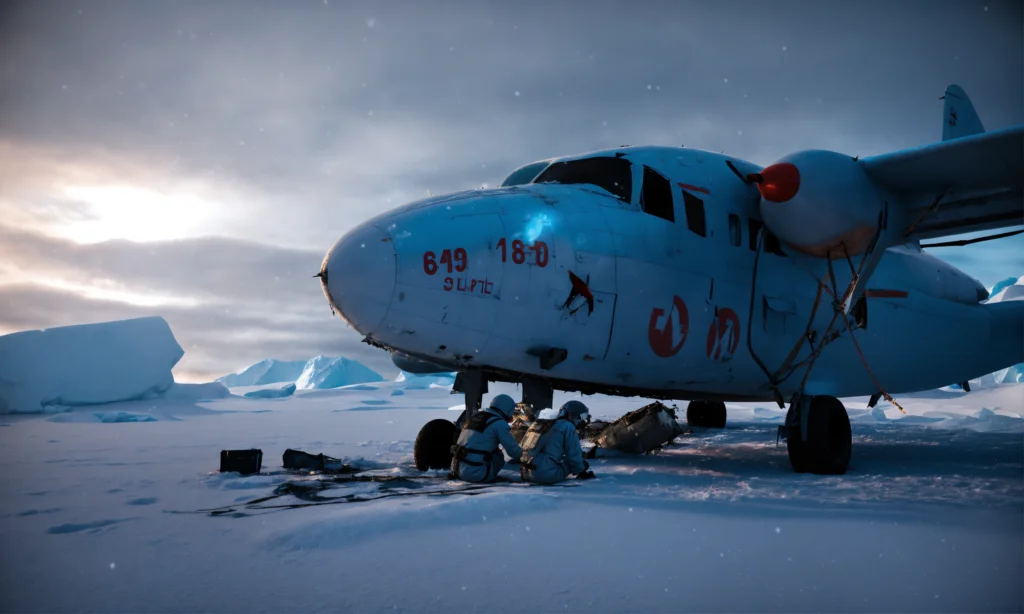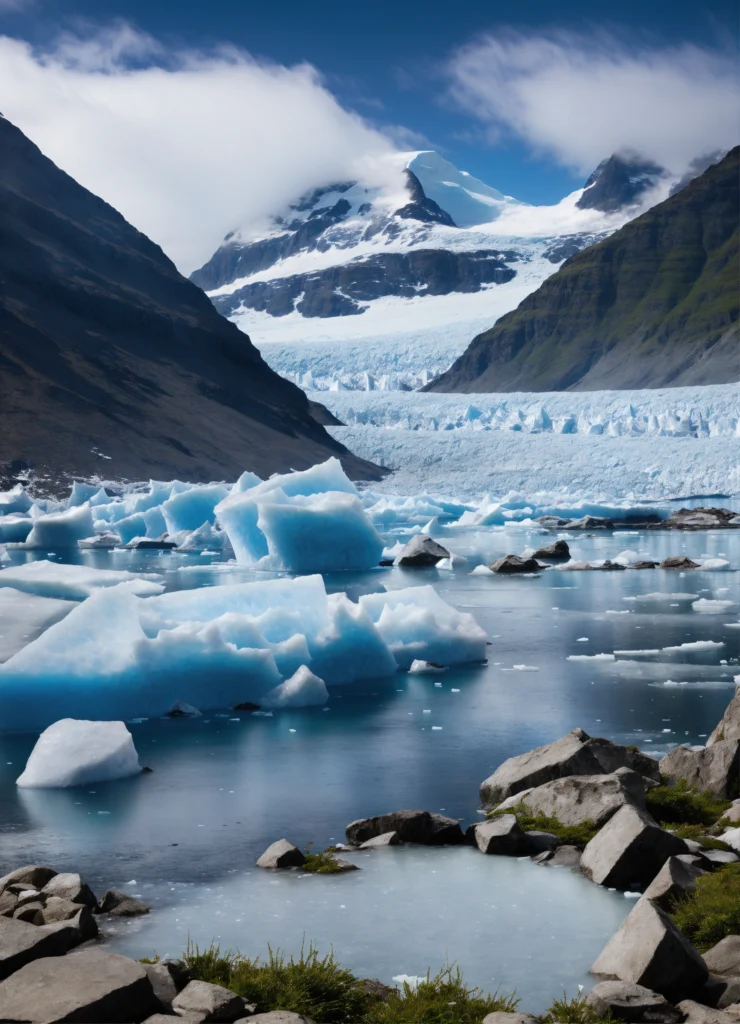The Ongoing Search for Air Flight 445: Unraveling the Mystery Over Alaska’s Norton Sound
Introduction: A Community Holding Its Breath
Imagine waiting for a loved one to arrive, only to find out their plane has disappeared without a trace. It’s a nightmare scenario that no one ever wants to experience, yet this is the grim reality facing families and communities after the sudden disappearance of Air Flight 445 over Alaska’s unforgiving Norton Sound.
The vast, icy expanse of Alaska presents one of the most challenging terrains for aviation. With extreme weather conditions and remote locations, any flight delay or communication breakdown can quickly turn into a life-threatening situation. As rescue teams continue their exhaustive search, you may be wondering: What happened to Air Flight 445? What efforts are being made to locate it? And most importantly, what does this mean for aviation safety in extreme environments?
Table of Contents
Let’s dive into the details of this unfolding event and explore everything you need to know.
What Happened to Air Flight 445?
The Flight Route and Last Contact
Air Flight 445 was en route from Unalakleet Airport to Nome Airport, a journey that should have been routine. The aircraft, carrying nine passengers and one pilot, took off in what initially seemed like manageable weather conditions. However, shortly after departure, the aircraft lost contact with air traffic controllers.
- Last known location: Norton Sound, Alaska
- Final recorded altitude: 5,300 feet
- Last communication: The pilot indicated a plan to enter a holding pattern due to runway clearance issues at Nome
After this final transmission, all contact was lost. The immediate concern was that harsh weather might have played a role in the aircraft’s disappearance.
H1: Search and Rescue Operations Underway
Agencies Involved in the Search
Locating a missing aircraft in Alaska is no small feat. The operation involves multiple agencies, each contributing their expertise:
- U.S. Coast Guard: Conducting aerial and maritime searches
- Alaska State Troopers: Assisting with coordination and land searches
- Nome Volunteer Fire Department: Providing local ground search support
- Bering Air and Private Pilots: Using company aircraft to assist in the effort
Challenges in the Search Mission
Despite the efforts of multiple agencies, several obstacles make the search for Flight 445 extremely difficult:
- Harsh Weather Conditions:
- Heavy cloud cover and snowfall reduce visibility.
- Freezing temperatures pose risks for search teams.
- Remote Terrain:
- Alaska’s vast wilderness makes it difficult to cover ground quickly.
- Large bodies of water, like Norton Sound, complicate aerial and maritime search efforts.
- Limited Daylight Hours:
- The short daylight window in winter means fewer hours available for search operations.
The Role of Weather in Aviation Disasters
Why Alaska is One of the Most Dangerous Places to Fly
Flying in Alaska is unlike flying anywhere else in the United States. The region’s unique geography and unpredictable weather patterns make aviation inherently risky.
- Rapid Weather Changes: A clear sky can turn into a blizzard within minutes.
- Strong Winds and Turbulence: Coastal winds and mountain drafts often create dangerous flying conditions.
- Limited Emergency Landing Spots: Remote locations mean fewer airstrips available for emergency landings.
Aviation Incidents Similar to Flight 445
This isn’t the first time a plane has gone missing in Alaska. In 1972, a plane carrying U.S. Congressman Hale Boggs disappeared over the state, and despite extensive searches, it was never found. The challenges faced in that case mirror those seen in today’s search for Flight 445.

Picture by AI
How Families and the Community Are Coping
Emotional Impact on Loved Ones
The uncertainty of a missing flight is agonizing. Families of the passengers are left in limbo, hoping for positive news while bracing for the worst.
Community Support Initiatives
In difficult times, communities come together. Support efforts include:
- Counseling services for affected families.
- Local fundraising efforts to assist in search operations.
- Vigils and prayer gatherings to show solidarity and hope.
H1: What’s Next in the Search for Air Flight 445?
Advancements in Search Technology
With modern technology, search teams have better resources than ever before. Some key tools being used include:
- Satellite imaging to scan large areas remotely.
- Drones for aerial searches in difficult-to-reach locations.
- Underwater sonar for detecting wreckage beneath the water’s surface.
When Will the Search End?
There is no set timeline for when the search will conclude. Authorities remain committed to exhausting all available resources before making any final determinations.
Understanding Aviation Safety in Alaska
How Common Are Aviation Accidents in Alaska?
Alaska sees a significantly higher rate of aviation incidents compared to other states. The main reasons include:
- High dependency on air travel due to a lack of road infrastructure.
- Extreme and unpredictable weather conditions.
- Heavy reliance on small aircraft, which are more vulnerable to adverse conditions.

Measures to Improve Flight Safety
To minimize future tragedies, aviation experts recommend:
- Improved Weather Tracking Systems: More real-time updates for pilots.
- Better Pilot Training Programs: Increased emphasis on handling emergency scenarios.
- Stronger Aircraft Regulations: Ensuring small planes meet rigorous safety standards.
FAQs About Air Flight 445 and Aviation Safety
What was the flight route of Air Flight 445?
The plane was traveling between Unalakleet and Nome, two locations commonly connected by small aircraft.
How long has the search been going on?
The search began immediately after contact was lost and continues with full force.
What are the biggest challenges in finding missing planes in Alaska?
The combination of harsh weather, vast terrain, and deep water makes the search extremely difficult.
Has there been any official statement from Bering Air?
Bering Air has issued a statement expressing their commitment to supporting search efforts and assisting affected families.
What can the public do to help?
People can contribute by donating to search and rescue organizations, spreading awareness, and offering support to affected families.
Conclusion: Holding Onto Hope
The search for Air Flight 445 is far from over. As rescuers continue their work, families and communities cling to hope, waiting for answers. While Alaska’s terrain and weather create immense challenges, determination and advanced technology may yet yield a breakthrough.
Your role in this? Stay informed, spread awareness, and support those affected. Tragedies like this remind us of the importance of aviation safety, community resilience, and the power of collective efforts in times of crisis.

